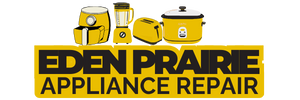Microwaves are a key feature in modern kitchens, simplifying meal prep with ease. However, after prolonged use, they may encounter issues. Before opting to replace your microwave, consider troubleshooting or seeking professional help. This guide will examine common microwave problems and offer solutions, saving you both time and money.
Section 1: Putting Safety First – Top Tips for Safety
Before you start repairing your microwave, safety must be your top concern. Microwaves work on high voltage, which can create electrical hazards. Be sure to follow these safety precautions.
Repair Precaution: Unplugging the microwave from the power source ensures safety while performing any repairs or adjustments.
Safety Alert: Always avoid spraying water or using wet materials inside the microwave, as it could result in a shock.
Protective Gear Tip: Make sure to wear gloves and goggles when working with electrical components to ensure safety.
Section 2: Microwave Woes and Remedies – Solving Daily Microwave Problems
Microwave Won’t Activate:
Troubleshooting Procedure: Start by checking the power source and ensuring the circuit breaker is functional. If that’s fine, investigate the fuse and door switch for possible malfunctions.
Microwave Turns On, But It Doesn’t Generate Heat:
Solution consideration: Evaluate whether the magnetron, capacitor, or diode is malfunctioning. A technician can replace the components for a reliable fix.
Microwave Sparking Issues: Common Causes and Fixes
Step-by-Step: Carefully inspect for metal debris or a tattered waveguide cover. Remove objects promptly and replace the cover if necessary.
Uncommon Microwave Sound Problems: Common Causes and Resolutions
Proposed troubleshooting strategy: If your microwave is making noise, check the turntable motor or cooling fan for malfunctions. Replacing these parts should fix the problem.
Microwave Door Refuses to Shut or Seal Correctly:
Solution Action: After fixing the problem, clean the door seal thoroughly and check for any food or dirt. Replace components as needed.
Microwave Buttons/Keypad Not Responding: Causes and Solutions
First Step: Clean the keypad thoroughly and check for any moisture or debris that could be causing the issue.
Addressing Microwave Overheating: Tips and Insights
Investigate this course of action: To prevent overheating, make sure the microwave area is free from obstructions for proper airflow. Additionally, check the thermostat or sensor for any issues and replace them if needed.
Section 3: Knowing When to Seek Professional Help – When Your Skills Aren’t Enough
Although many microwave issues can be resolved independently, some require professional technician expertise:
High-Voltage Component Repair: Always seek professional help to fix magnetrons, capacitors, and diodes, requiring expert knowledge and specialized equipment.
Complex Wiring Issues: For complex wiring issues, rely on trained professionals if you’re not confident in managing electrical wiring tasks.
Safety Precautions: If you have doubts about your safety or the microwave’s condition following troubleshooting, contacting a technician is important.
To increase the lifespan of your microwave, repairs can be done at a reasonable cost. Minor issues often correct themselves when common problems are addressed and safety procedures are followed. However, for more complex issues, or when unsure about the repairs, consult with a professional. With the right information and care, your microwave will last for years.

